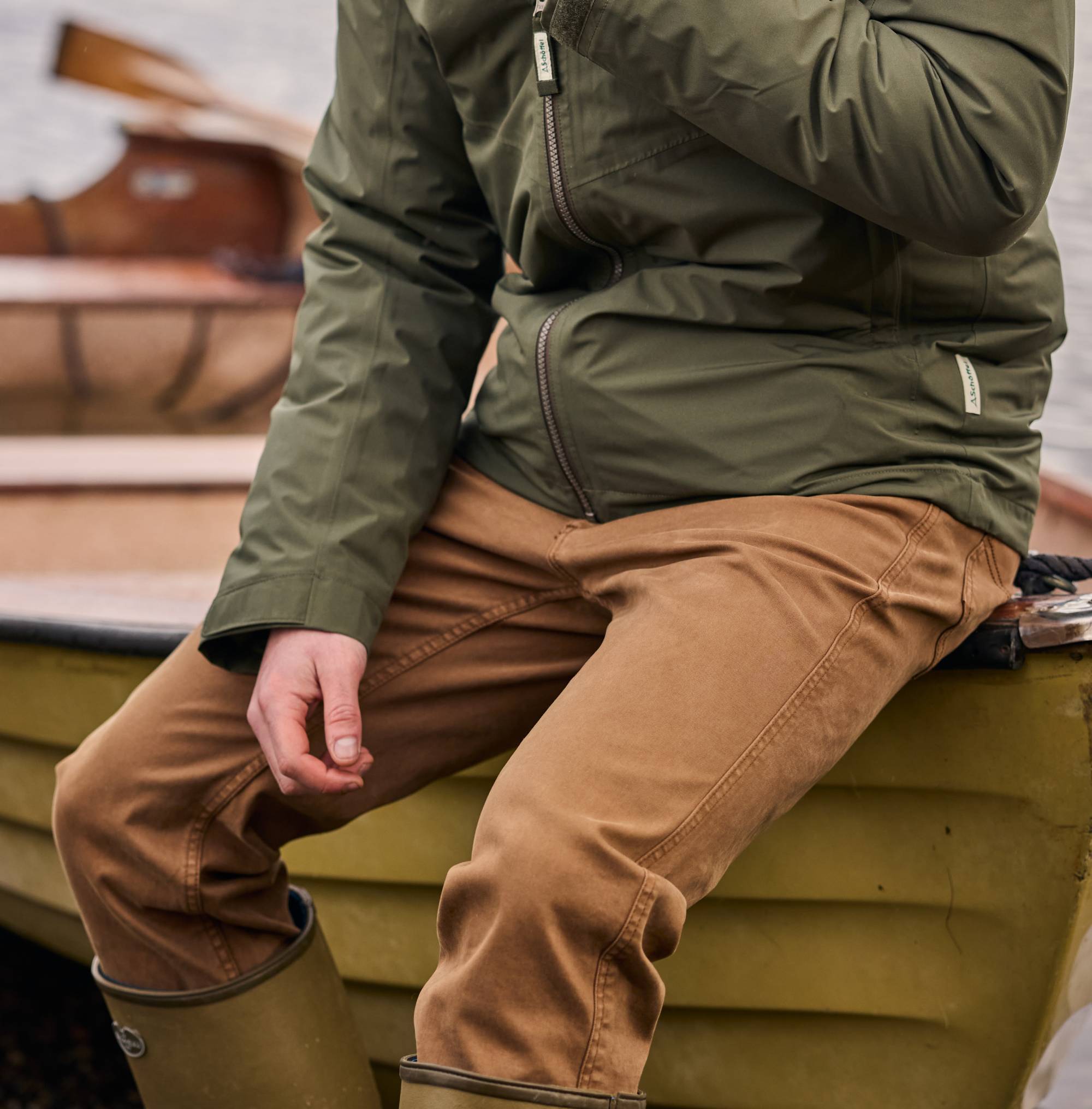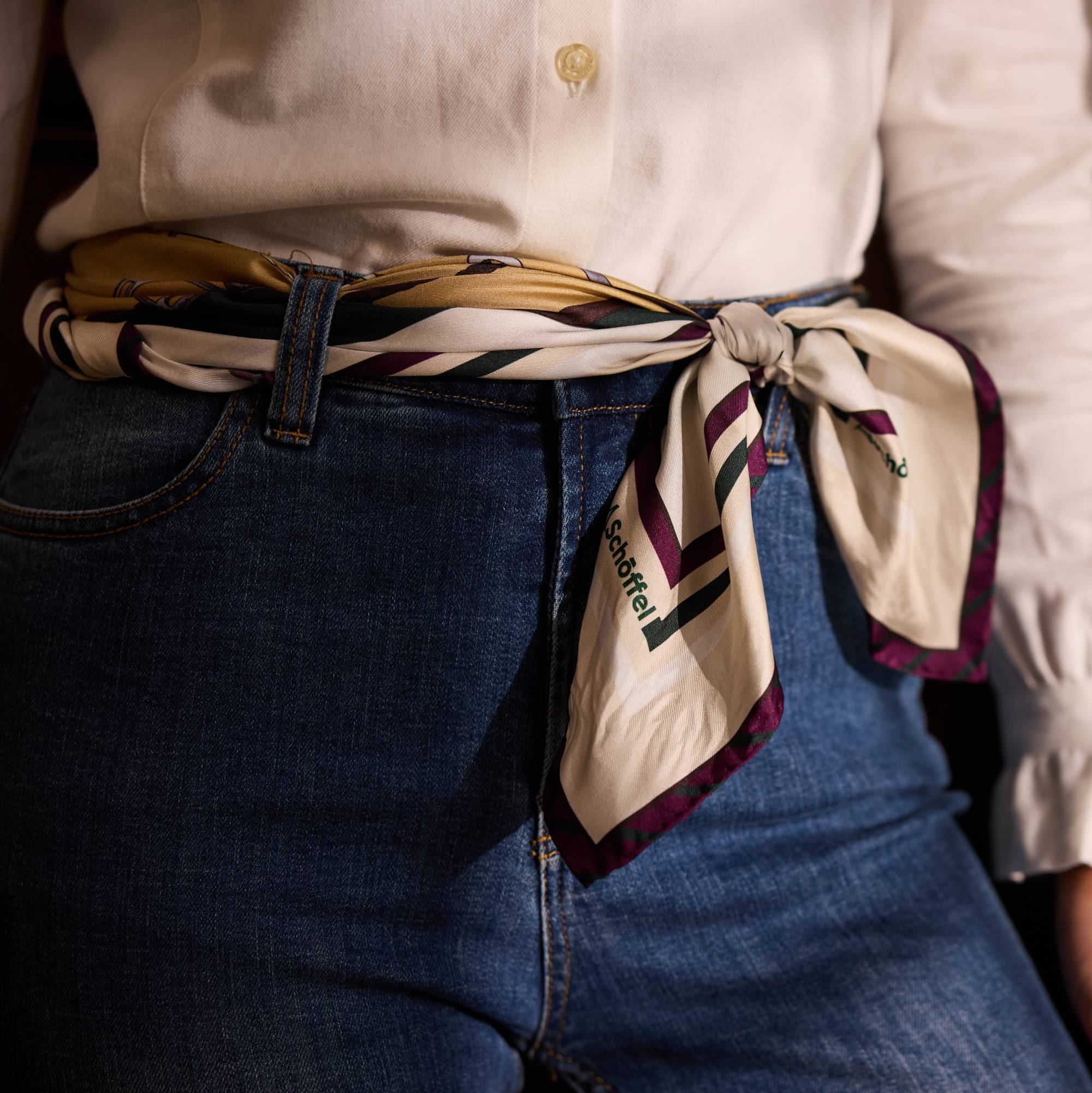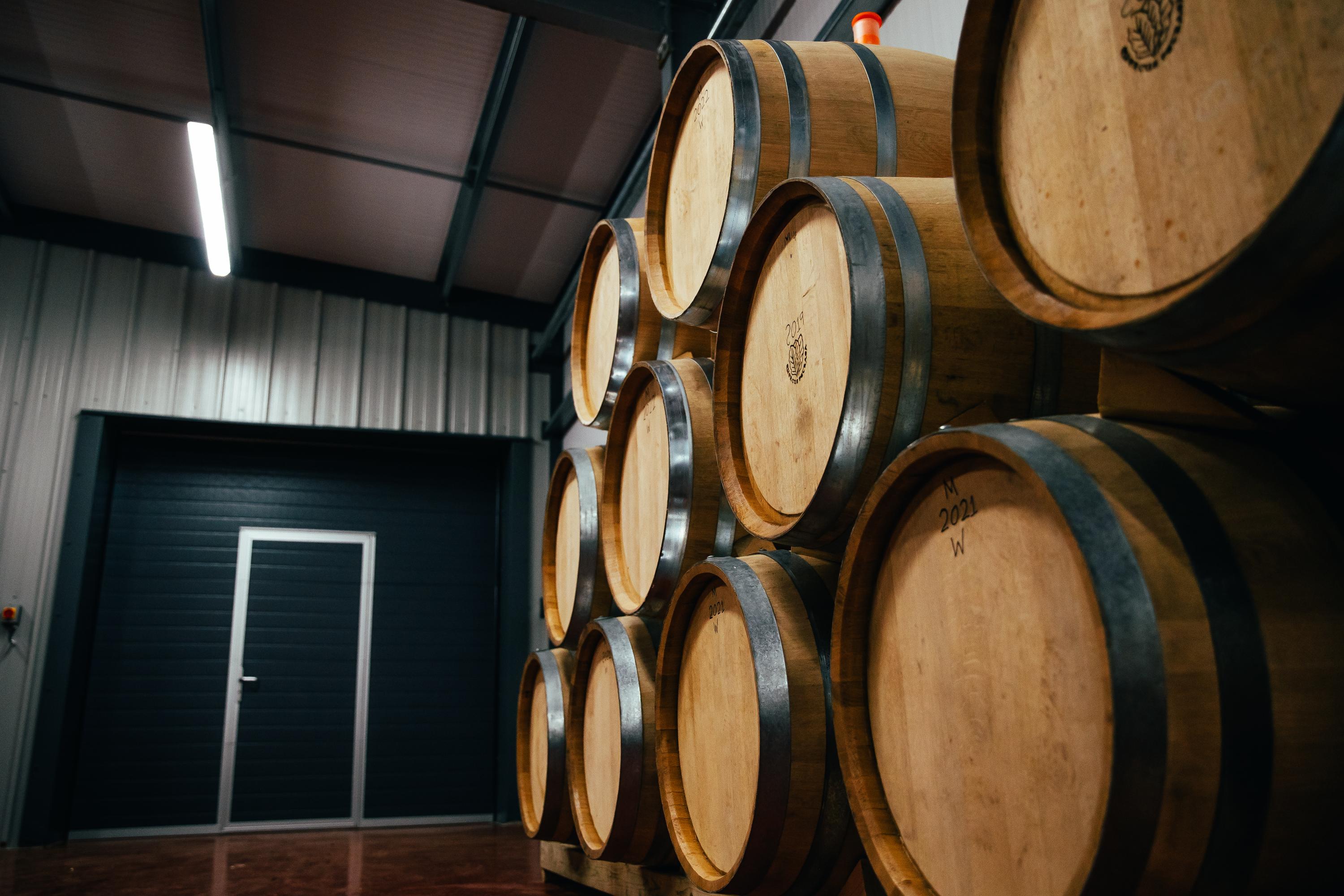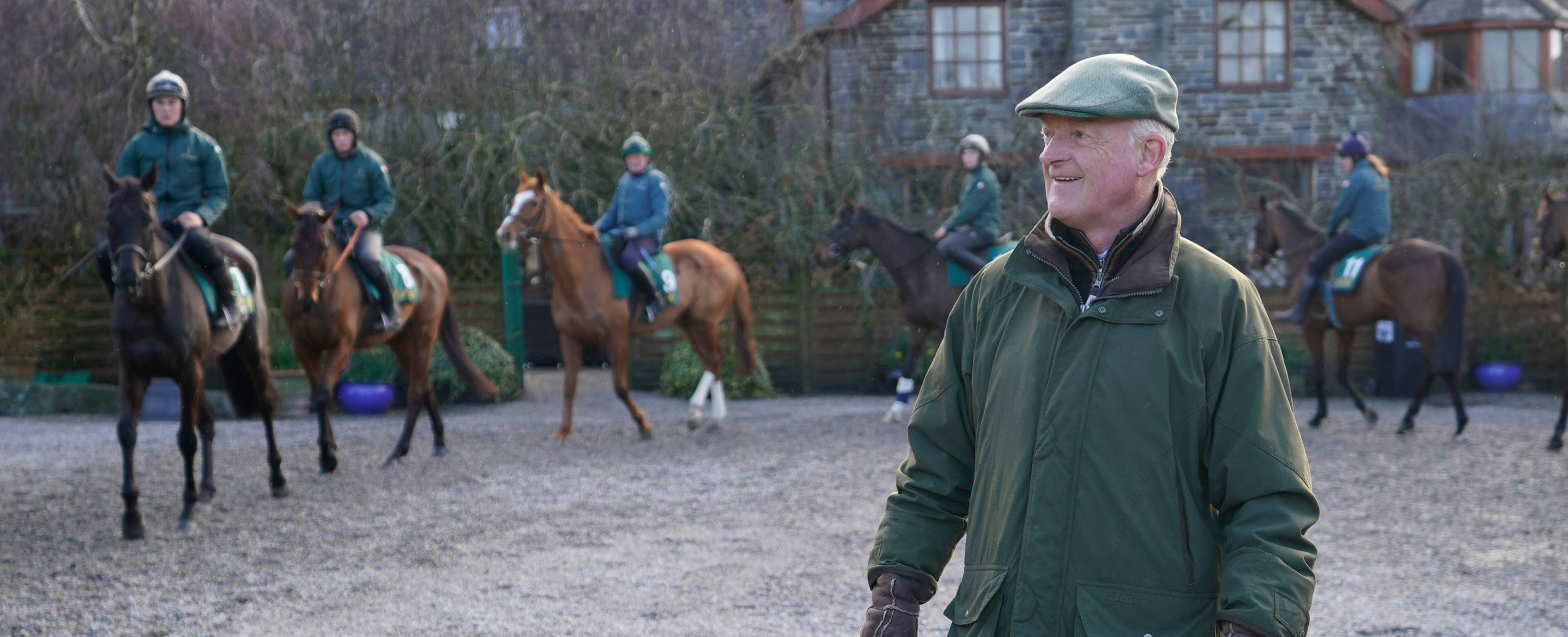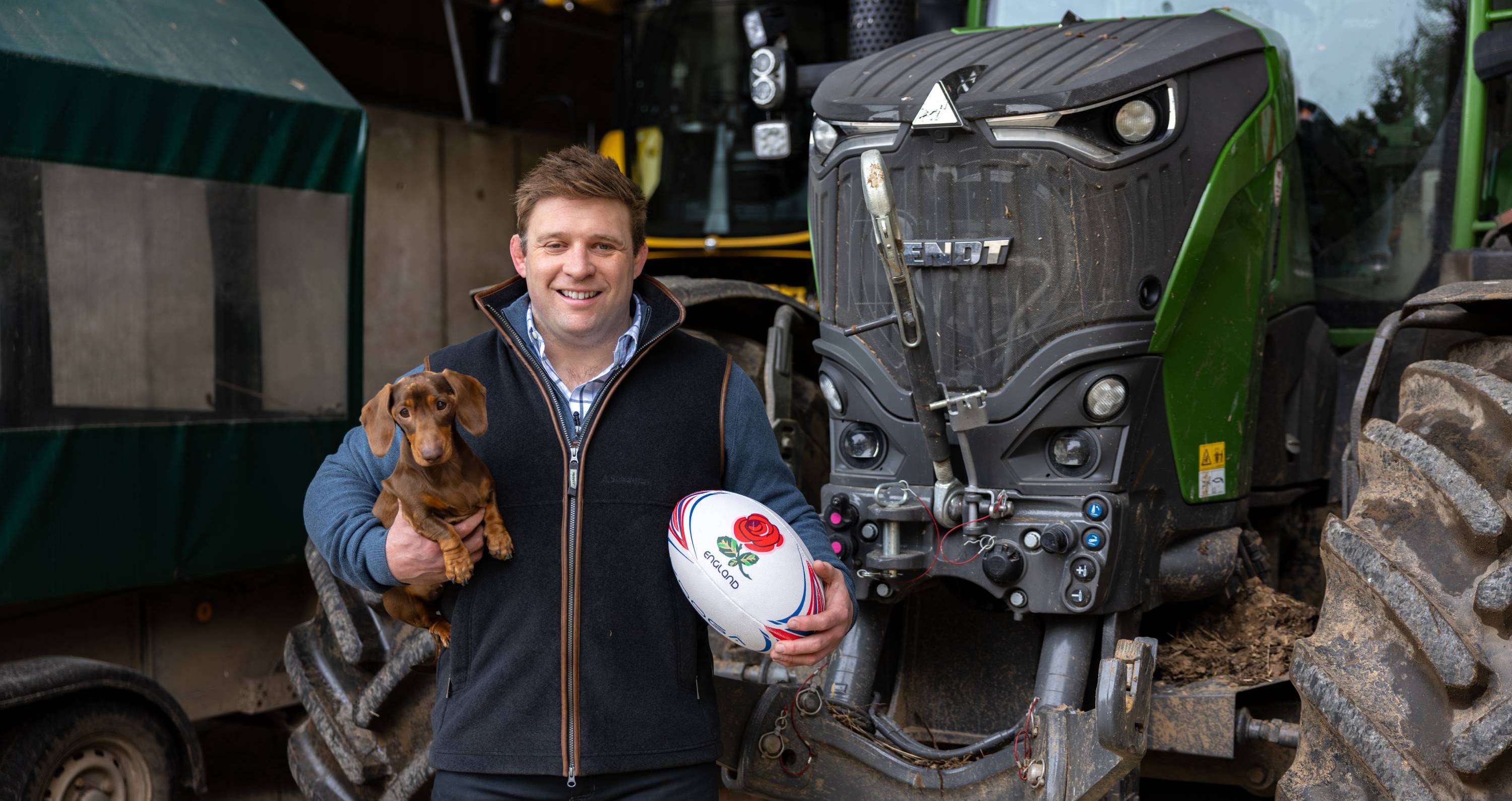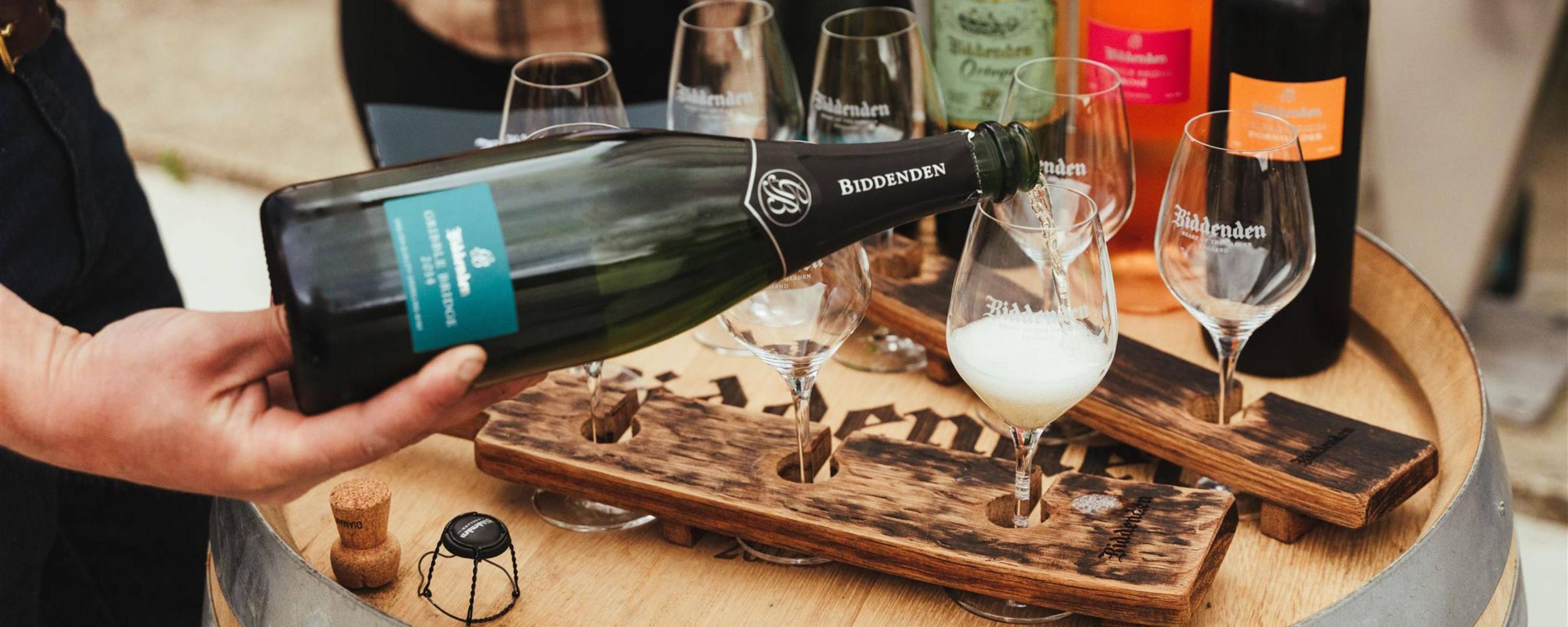

Cheers to England. A brief guide to English wine
Supporting English wine is no longer about patriotism or because it’s a novelty –it’s because it’s a damn sight better than that bottle of Moët on the shelf next to it, says Georgie Fenn - a popular wine blogger and writer from Rutland. Here, she provides an insight into English wine, what makes certain parts of England so suited to growing vines, and the various stages of the winemaking process.
There have been several moments during my wine career where English wine has stopped me in my tracks. The first was when I visited Chapel Down in 2019 and tried the 2016 vintage of their Kit’s Coty Chardonnay. ‘So we can make Burgundian-style still wines,’ I thought to myself. That’s interesting. The next moment was nonchalantly opening a bottle of 2018 (remember that summer) pinot noir from Burn Valley vineyard in Norfolk. I’d only pulled it out of the cellar for a bit of fun. It turned out to be one of the best pinot noirs I’ve had in the last five years – and I’ve had my fair share of decent French wines in that time. (Sorry, it’s my job).
The cherry on top of the glorious English wine cake was, however, a bottle of 1992 Nyetimber. The 1992 Nyetimber is a blanc de blancs, meaning it is only made from Chardonnay grapes. This bottle, created by the original founders, Sandy and Stuart Moss, is the reason the English started gaining momentum as serious producers of wine. At a blind tasting in 1997, it stunned judges who simply assumed it came from Champagne. And the rest, as they say, is history…
It is worth pointing out that vineyards in England have been around for much longer than Nyetimber’s 1992 bottling. Records actually go back to the Domesday Book which refers to over 42 vineyards in southern England at the end of the 11th Century. How many of these survived over the years? Hard to say, but today there are 1,130 vineyards in the UK and over 200 wineries (not every vineyard has its own winery.) They span from Penzance up to, somewhat unbelievably, Yorkshire, with almost 10,500 acres under vine in total. It’s a relatively small area up against the likes of Spain and their 2.2 million acres but a healthy and growing number nonetheless.
A long-term investment
Winemaking is a laborious process. From the day of planting up a promising south-facing field with your very exciting vines, you will have to wait around three years to even get a crop of grapes worthy of turning into wine. Then, to drag things out further, by law, English sparkling wine must be aged ‘on the lees’ (more on these technicalities later) for a minimum of nine months.
Most winemakers give the wines at least 24 months on the lees before disgorging and having something to sell. That’s around five to six years from planting your crop to getting it in a shop – quite the drawn-out investment.
Vineyard owners range from diversifying farmers to very wealthy businessmen in need of a hobby. Interestingly, a few serious French houses have been buying up land in the south of England, too. Pommery started it. They got a whiff of the similarities between Champagne and Hampshire back in 2016 and so bought 40 hectares of land to plant up with Chardonnay, pinot noir and pinot meunier, the traditional grapes that make Champagne and, indeed, English sparkling. Then came along Taittinger. In 2017, they planted 52 hectares of vines on an old fruit farm in Kent. If this isn’t proof that English terroir is terrific, then I don’t know what is.
What makes land suitable for growing vines?
You might be wondering what it is about our green and pleasant land that makes it so suitable to plonk. If you’re a country person, you will probably have some sort of understanding of soil. Perhaps your dog walking route goes across one field with all sorts of different patches, some that muddy the Le Chameaus and others that don’t. You might have noticed that some parts of your garden frost harder than others. This is a simplified version of what wine people call ‘terroir’. It just so turns out that parts of England are essentially imitating the terroir of Champagne (but when it was at its best 30 years ago, before climate change really starting playing havoc with increasing temperatures).
In the South East especially, there is a magnificent vein of free-draining chalk where sparkling wine grapes thrive. It is also cool, something that Champagne has been lacking in more recent years, which suits the likes of Chardonnay, pinot noir and pinot meunier, as they prefer a long and slow ripening season.
How is English sparkling wine made?
Now for a simplified course in winemaking!
English sparkling wine is (mostly) made using what is known as the ‘traditional method’, the same technique they use in Champagne. The ‘classic cuvée’ involves a threesome of Chardonnay, pinot noir and pinot meunier, all grown separately and made into individual base wines. There are also blanc de blancs, just Chardonnay, and blanc de noirs (a blend of pinot noir and pinot meunier). There is no set rule on how much of each grape must be in the final blend and some winemakers will use very little to no pinot meunier.
The initial process consists of picking then pressing the grapes – ever so gently, as you will have noticed that pinot noir and pinot meunier are red grapes and English sparkling is largely not red. The colour of wine comes from the skins so as long as you press them sharpish after picking, the colour remains in the discarded skins, not the juice.
So, you have your grape juice. It is delicious as this stage, all sweet and ripe. This juice will then go into big steel vats and undergo primary fermentation with the help of some added yeast. Once fermentation is complete, you have what is known as a ‘base wine’. The winemaker then has the task of blending these base wines to create the final sparkling blend (in Champagne it is called a cuvée).
There are still no bubbles at this stage, so the new blend of still wine is then put back into a big steel vat and more yeast and some sugar is added. This liquid then goes into bottles with a crown cap (like on a beer) for secondary fermentation. In a nutshell, the yeast eats the remaining sugar in the wine and then farts out carbon dioxide, which is what creates bubbles! Once the yeast has eaten all of the sugar, it dies in a process called autolysis and becomes a sad little sediment in the bottle. This is the aforementioned ‘lees’, the dead yeast cells. A longer lees resting time creates more ‘autolytic notes’ – think toasty, brioche-like, bakery characteristics in the wine.
Now, you can’t have the dead yeast in the final product so there is a process called riddling where the bottles are shimmied around to encourage the dead yeast to gather in the neck of the bottle. If you have seen any photos of the cellars in Champagne, you will have seen riddling racks. These days it is mostly done by machines but some places still riddle by hand.
Finally, if you’re still with us, the bottles undergo a very exciting semi-explosive process called disgorgement, where they are gently placed upside down into a freezing liquid which causes the yeasty bit to freeze in the bottle neck. The crown cap is then removed and the dead yeast fires out – its final moment of glory. All that is left is for the wine to be topped up with a dosage, which is usually a mixture of wine and sugar. At this stage, however, some winemakers opt for zero dosage, with no additional sugar. In goes the cork, and voilà, an English sparkling wine is born.
What’s the difference between vintage and non-vintage wine?
If the wine is a ‘vintage’, all of the grapes come from the year listed on the label, but if it says NV (non-vintage), it means the wine is a blend of several different vintages, decided on by the winemaker. Most houses produce a NV and this will become their ‘house style.’ It is an art in itself creating a sparkling that tastes the same year after year no matter what the weather throws at the vines. Winemakers will only usually produce a vintage in exceptional years, usually when the weather has behaved and the grapes are as good as they can get.
Variety abounds - do visit the vineyards
This is, of course, just the process for making English sparkling wine, but there are now over 60 different varieties of grapes grown in the UK, from still wines to sparkling wines and everything in-between – even sherry! I’d recommend visiting wineries and listening to what they have to say, as every winemaker has their own style and it is actually really interesting even if you aren’t a wine bore like me.
Bacchus, a still white wine, has become a bit of a supermarket favourite, mostly because it is easy to pronounce and has a similar flavour profile to sauvignon blanc. This German varietal is just one of a whole host of brilliant grapes that thrive in the English climate.
Exploration is key to finding what else you like out there. My recommendation is that you jump in the car and go on a bit of a road trip of English vineyards. So many of them are built with tourism in mind so you will be well looked after. How else will you find out if you like, for instance, ortega, a stunning grape that also makes a sweet wine? The best time of year to visit is September, just before harvest, when the grapes are ripe. Supporting English wine is no longer about patriotism or because it’s a novelty, it’s because it’s a damn sight better than that bottle of Moët on the shelf next to it.
A few of my favourite English wines
Camel Valley Pinot Noir Rosé Brut, 2019 (new vintage is out, 2020) £35.99 from Waitrose
This is one of my all-time favourite English sparkling wines. Camel Valley is located in Cornwall and the dynamic couple, ex-RAF pilot Bob Lindo and his wife Annie first planted vines in 1989. Their son, Sam Lindo, is now taking care of these and what a jolly good job he is doing too. It has quite a delicate bubble and a hint of minerality with the abundance of red fruit. Think freshly washed ripe strawberries on a sunny day.
Nutbourne Vineyards Sussex Reserve, 2022 £12.80 from Nutbourne
A still wine from West Sussex this time. I will never forget my first visit to Nutbourne. They aren’t very far away from Nyetimber so I swung by not really knowing what to expect. There were alpacas and a sort of air of controlled chaos. A woman, I’d come to know was Bridget Gladwin, with eyes bluer than the sea, asked me if I’d like to try the wines. They’ve had my utmost respect since. Another family affair, the Gladwins are all very much still involved. The Sussex Reserve is what is known as a ‘field blend’ and includes bacchus, huxelrebe and reichensteiner. It is aromatic, and just so full of flavour with a small hint of oiliness, perfect for curry night!
Biddenden Vineyards Ortega, 2022 £14.90 from Biddenden
Another still white wine, but this time one of my favourite grapes, ortega. It is what I would describe as grown-up elderflower cordial. A delightful little wine. Biddenden planted ortega in the 60s and have had a lot of success with it. They have quite a loyal local following, so you have to be speedy to buy their wine.
Rathfinny Estate Blanc de Noirs 2019 from £49 from Rathfinny
Rathfinny is very much a vineyard with seemingly endless budget and they are very good at the hospitality side of things. Thankfully, their wines are brilliant too, particularly the blanc de noirs. In this instance, it is made up of mostly pinot noir and a little pinot meunier, but you probably already knew that after reading the blog, right? What I love about this wine is that while it is delicious, there is a wonderful Englishness to it, with the ripe russet apple, and a hint of spice, like a warm and comforting apple pie after a long day.
Ridgeview Bloomsbury NV £34.99 from Waitrose
This is a non-vintage classic blend of pinot noir, pinot meunier and Chardonnay. Ridgeview is located in Sussex, and very much open to tours and tastings too. This is what I would describe as your more traditional style of fizz. The perfect aperitif, fresh but moreish to keep the conversation flowing, and enough zingy acidity to keep everyone perky.
Prices and links correct at the time of writing. Changes may have occurred since publishing.



